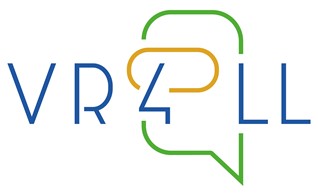A number of IH affiliates have joined forces to work on a project called VR4LL – which is shorthand for Virtual Reality for Language Learning. Members include IH Split, IH Sofia and IH Bucharest. Thanks to largely to the team from Croatia, the project has obtained EU funding through the Erasmus KA2 scheme and is scheduled to run over a three-year period.
Here, Jonathan Dykes, one of the instigators of the VR4LL project and a pioneer in developing Virtual Reality materials for language learning, talks more about the project.
Our primary objective is to introduce virtual reality into language teaching classrooms in order to enhance the learning experience. VR can provide language learners with the opportunity to immerse themselves in a wide variety of engaging environments and work collaboratively to perform a range of different tasks. These tasks will all focus on developing learners’ communication skills and fluency.
 Our initial target market will be teenagers and adults studying English, but over time we should be able to expand the age range to include younger learners, as well as students of other languages.
Our initial target market will be teenagers and adults studying English, but over time we should be able to expand the age range to include younger learners, as well as students of other languages.
The first phase of our current project consists of developing four virtual worlds. Those currently under consideration include: an international space station, a tropical desert island, a building site, and the Roman Forum at around 50 BC! Tasks may include trying conducting experiments in the space station laboratory, or trying to discover who killed that Roman senator found lying face down in the baths!
Students should find the tasks enjoyable and motivating, but there will also be a real pedagogical purpose, so the project includes providing detailed teachers’ notes.
In many ways we’re using technology to combine two well know language teaching methodologies – task-based learning and total physical response. The experience of being fully immersed in a learning environment has been proved to aid the learning process, although until now there has been little research done with VR for language learners (that we are aware of).
VR technology is developing fast and becoming both more impressive and easier to use. The cost of buying the latest headsets has also fallen dramatically, making the technology affordable for the vast majority of language schools.
If everything goes according to plan, we should have our first VR materials ready for piloting by the middle of 2020. If any IH affiliate would like to participate in this piloting process, feel free to let us know. In the meantime, you can follow our progress on our dedicated Facebook page.